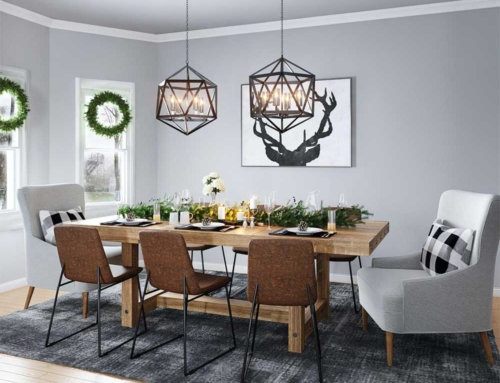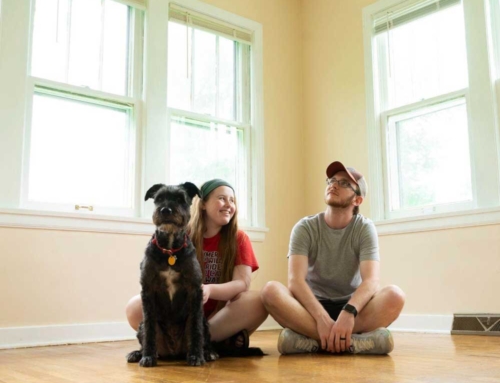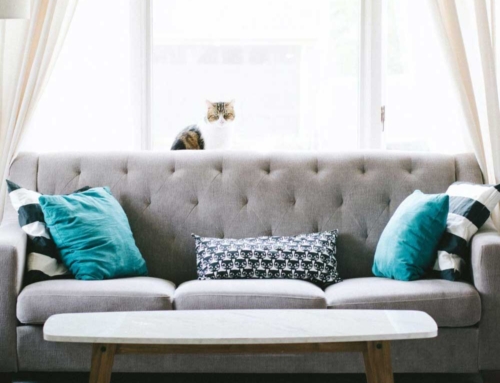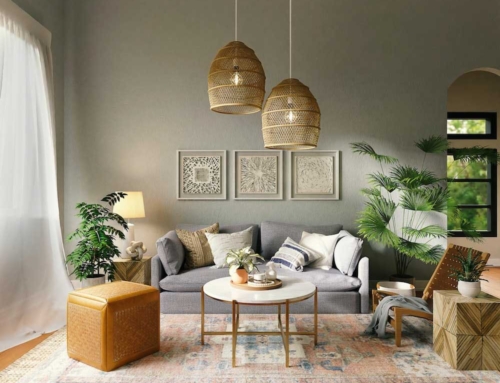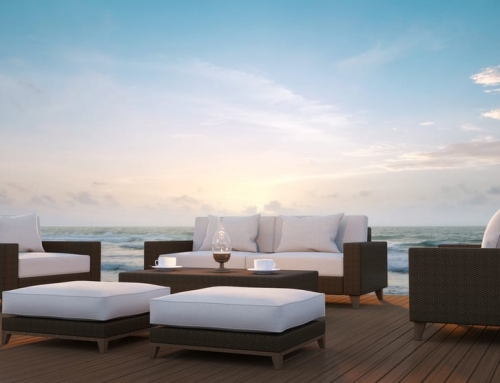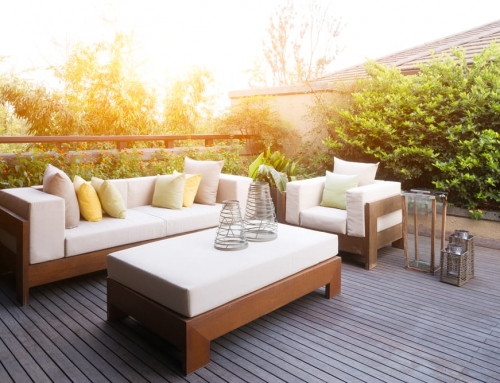Good lighting can make a huge difference to a room’s overall look and feel. It can transform a dull and dreary space into something inviting and warm. Lighting can also be used to accentuate certain features of a room or to create a certain atmosphere. It can be used to highlight artwork or to create a cozy, intimate atmosphere.
In today’s article, we will explore how you can use the magic of lighting for your furniture and make your space shine! Here’s what you need to know:
How Does Good Lighting Affect a Room?
Lighting is an important aspect of interior design. It can have a dramatic impact on the atmosphere of a room and can be used to create a certain mood. Understanding how to use light to create a certain atmosphere can help create a beautiful and inviting space.
Good lighting can make a room look larger and brighter. It can also be used to highlight certain features or artwork. Natural light is always the best option when it comes to lighting a room, but artificial lighting can be used to create the same effect when natural light is not available.
Using the right type of lighting can also help make a room more comfortable. Incandescent lighting tends to give off a warm, inviting glow, while fluorescent lighting can create a colder, harsher atmosphere. You can create a more inviting atmosphere by using different types of lighting.
The Magic of Lighting
The way a room looks is determined by the type and amount of light used. Different types of light create different moods and atmospheres. For example, a bright, white light can create a crisp and modern look, while a softer, warmer light can create a more relaxed and comfortable atmosphere.
In addition, different types of light can be used to highlight certain features in a room, such as artwork or furniture.
The light used in a room can also affect how it looks. Too much light can create a harsh feel, while too little light can create a dark and gloomy atmosphere. The type and amount of light used in a room should be chosen carefully to create the desired atmosphere.
Finally, the angle at which the light is directed can also affect the way a room looks. Directing light at certain angles can create shadows and highlights, helping to emphasize some aspects of the room and creating a more dynamic atmosphere.
Key Factors to Consider For Good Lighting
Good lighting is essential for any space, whether it’s a commercial or residential setting. It can create the perfect atmosphere, enable people to work more effectively, and even improve the aesthetics of a room. But with so many different types of lighting available, it can be challenging to know which is the best choice for you.
Here are some key factors to consider when selecting lighting for your space.
1. Purpose
The first factor to consider is the purpose of the lighting. Different types of lighting are designed for different uses, such as task, ambient, accent, or decorative. Knowing what you want to use the lighting for will help you determine the lighting best for your space.
2. Light Source
The type of light source you choose is also important. Incandescent bulbs, fluorescent bulbs, and LED bulbs all produce different types of light, so it’s important to consider the kind of light you need for your space. For example, LED lights are energy-efficient and provide a crisp, white light, while fluorescent lights are more affordable but tend to produce a cooler light.
3. Control
You should also consider the type of lighting control you want. This can include switches, dimmers, and motion sensors, among other options. You can control it remotely or with your smartphone depending on the type of lighting you choose.
4. Aesthetics
Lighting can also be used to enhance the aesthetics of a room. Choose lighting fixtures that match the room’s style or create a certain mood. For example, choose a chandelier for a formal dining room or a wall sconce for a hallway.
5. Cost
Finally, it’s essential to consider the cost of the lighting. If you are on a tight budget, you may want to look for more affordable options, such as LED bulbs or fluorescent bulbs. However, if you are looking for high-quality lighting, you may be willing to spend more for fixtures and bulbs that will last longer and provide a better quality of light.
These are just a few key factors when selecting lighting for your space. You can find the perfect lighting to suit your space by thinking about your needs and budget.
How to Light Your Furniture
Good lighting design is an essential part of any interior design scheme and can greatly impact the look and feel of your furniture. Lighting can add warmth, atmosphere, and sophistication to any room. It is important to consider the type of furniture you have and the ambient lighting in the room.
Here are a few tips to elevate the look of your furniture through good lighting design:
- First, consider the type of furniture you have. Is it modern or traditional? A modern look could incorporate track lighting, while a traditional look might benefit from wall sconces for chandeliers. Think about the furniture’s colours, textures, and shapes to get an idea of the type of lighting that would work best.
- Second, think about the ambient lighting in the room. Ambient lightings, such as natural daylight or overhead lighting, can be used to set the mood or tone of the room. If the room is bright and airy, you can use a dimmer switch to control the intensity of the light. You can use lamps or spotlights to add light accents if the room is darker.
- Third, use wall sconces to add a touch of elegance to the furniture. Wall sconces are a great way to add a bit of sophistication to furniture and can instantly elevate the look of a room. Place wall sconces in strategic locations, such as above a bed or desk, to draw attention to the furniture and create a warm and inviting atmosphere.
- Finally, use accent lighting to draw attention to special pieces of furniture. Accent lighting, such as recessed lighting, can highlight a particular piece of furniture, such as a bookcase or a dresser. Use the lighting to create a focal point in the room and to showcase the furniture.
Basic Principles to Follow for Good Lighting Design
Play with the Natural Light in the Room
The first step in planning your lighting design is understanding the room’s natural light. Consider the room’s orientation—whether north-facing or south-facing – and the amount of natural light that comes in from the windows. This will help you determine how much artificial light you need to supplement the natural light.
Plan for Different Types of Lighting
Different types of lighting serve different purposes. Ambient lighting provides overall illumination for the entire room, while task lighting focuses on specific tasks such as reading or cooking. Accent lighting can highlight the room’s artwork or other features. A good lighting design should include all three types of lighting.
Use Layers of Light
Layering your lighting is key to creating a well-lit space. Use layers of light, such as wall sconces and recessed lighting, to create a warm and inviting atmosphere.
Use the Right Bulb
The type of bulb you use can make a big difference in how your space looks. Incandescent bulbs give off a warm, yellow light, while LED bulbs give off a bright white light. Choose the right bulb for the look and feel you want to create.
Consider the Size and Placement of Fixtures
The size and placement of your light fixtures are important for creating an even distribution of light in the room. Ensure the fixtures are the right size for the room and placed in the right spots for the most effective lighting.
Create a Balanced Look
A good lighting design should create a balanced look in the room. Avoid having too much light in one area and too little in another. Balance the light levels to create a cohesive look.
Choose Appropriate Fixtures
The types of fixtures used will also play an essential role in the lighting design of a space. Different fixtures can provide different light levels, and selecting the right fixture for the right task is important.
Consider the Color of the Light
The colour of the light is an important factor in creating the right atmosphere in any space. Different colours of light can have different effects, and it is important to select the right colour to help create the desired atmosphere.
Take into Account Control Options
The ability to control the lighting in a space is an important factor when designing a lighting system. Different control options can be used to adjust the lighting levels and colour, and it is important to select the right one for the space.
Following these basic principles will help you create a well-lit functional, and aesthetically pleasing space. You can create a space full of light and life with careful planning and the right fixtures.
Types of Lighting Fixtures for Furniture
1. Track Lighting
This type of lighting is usually found in modern and contemporary homes. Track lighting consists of a series of linear tracks that run along the ceiling and are equipped with multiple adjustable light fixtures. This is a great option for those who want to customize their lighting and create unique looks.
2. Recessed Lighting
Recessed lighting is mounted into the ceiling and ideal for task lighting or general illumination. Recessed lighting gives a room a modern look and can be installed in various configurations.
3. Chandeliers
Chandeliers are a classic and elegant choice for lighting fixtures. They come in various shapes and sizes, from traditional designs to modern looks. Chandeliers are usually hung from the ceiling and can be used to create a dramatic effect.
4. Wall Sconces
Wall sconces are wall-mounted light fixtures that can be used to provide ambient lighting. They are usually placed in hallways, entryways, and other areas where general illumination is needed. Wall sconces come in various styles, from modern and contemporary to classic and traditional.
5. Pendant Lights
Pendant lights are suspended from the ceiling and are often used to provide task lighting. They come in various shapes and sizes and can be used to create a unique look.
6. Table Lamps
Table lamps are a great way to add additional lighting to a room. They come in a variety of styles and can be used to create an intimate and cozy atmosphere.
7. Floor Lamps
Floor lamps easily bring light to a room without taking up valuable space. Floor lamps come in a variety of styles and can be used to provide both task and ambient lighting.
By taking the time to consider the different types of lighting fixtures available, you can create a beautiful and inviting, functional and stylish space.
Examples of How to Light Furniture
Living Room Furniture
The main light source in the living room is typically the ceiling lights. However, you can also use accent lighting to draw attention to certain pieces of furniture. For example, you can use spotlights to highlight a sofa, armchair, or artwork. You can also use wall-mounted sconces to add indirect light to the room and draw attention to the artwork.
Bedroom Furniture
In the bedroom, the focus should be on creating a calming atmosphere. Table lamps are a great way to add a soft, warm glow to the room. Bedside lamps allow you to read in bed without having to turn on the overhead light. You can also use a combination of overhead lighting, wall-mounted sconces, and table lamps to create a layered lighting effect.
Dining Room Furniture
The primary light source in the dining room should be overhead lighting. You can also use sconces on either side of the dining table to create an inviting atmosphere. Chandeliers are also a great way to add a touch of elegance to the room.
Kitchen Furniture
In the kitchen, you want to ensure that the lighting is bright enough to make cooking and cleaning easier. You can use pendant lights over the kitchen island to provide a bright, focused light. Under-cabinet lighting is also great for providing additional light for food preparation.
Office Furniture
In the office, it is important to have bright overhead lighting to make it easier to work. You can also use task lighting, such as desk lamps or wall-mounted sconces, to provide focused light for specific tasks. You can also use floor lamps to create a cozy atmosphere.
These are just some examples of how to light various pieces of furniture. Using the right lighting combination, you can create a unique ambience and draw attention to certain pieces.
The Bottom Line
Good lighting design has the power to transform a space completely. A well-lit room can make furniture and artwork look far more spectacular than a poorly lit one. With the right lighting fixtures strategically placed, a room can look bigger and brighter, with the furniture and other design elements standing out in the best possible way.
If you’re looking for the best furniture store in Sudbury, we can help you! Diggs and Dwellings is the North’s premier furniture and lighting store. We offer full delivery, service, and design consultations. Contact us today to learn more, and let’s help you solve your design challenges!

